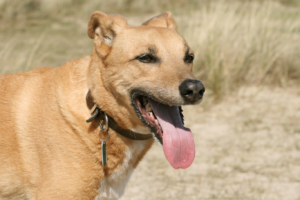Consistent training is one of the best ways to avoid behavior problems. Plus, it’s a great way to strengthen your bond with your pup!
Let’s face it: whether you’ve brought home a new puppy or your dog is just on the smaller side, little dogs sometimes get a bad rap. Youngsters are known to be rambunctious, and small breeds like beagles and chihuahuas are commonly stubborn and bossy.
With the right techniques, supplies, and mindset, training your small dog is definitely doable. In this guide, we’ll review our top tips to help both you and your pup succeed:
Shop for Smaller Supplies & Tools
First, we’ll answer a few common questions when it comes to small dog training.
Are Small Dogs Harder to Train?
When we talk about small pups, we’re mostly referring to those that are about 25 pounds or less. Tons of breeds (as well as mixed-breed pups) fit into this category and each has its own personality. While some breeds do have a reputation for being trickier to train, it’s not impossible. That being said, there are plenty of bigger dogs that have just as hard of a time learning the rules!
Plus, mixed breeds can be… well, a mixed bag! Poodles are known for being one of the easiest dogs to train, so your poodle-pug mix might be a dream, even if pugs have a reputation for being harder to train.
Ultimately, it all comes down to knowing the right techniques. All dogs learn in essentially the same way, but you’ll need to make a few tweaks to adapt to their smaller size.
What Should I Teach My Small Dog First?
Another common question that small dog owners ask is: should I even train my pup? A smaller dog’s behavior problems can be easier to ignore and some owners argue that they can just scoop up their pup to get a handle on them. But teaching your dog good behavior has other benefits too: it helps keep them safe and it helps the two of you strengthen your bond!
Some of the basic things you can (and should) teach your small dog include:
- Potty training
- Leash training
- Crate training
- “Sit,” “stay,” and “come” commands
- “Down” command, if your little one likes to jump
- “Quiet” command, if your pup loves to bark
What are the most effective dog training methods?
Additionally, there are several methods you can choose from, each with a slightly different approach:
- Positive reinforcement: uses treats and/or praise as a reward for good behavior
- Clicker training: another form of positive reinforcement, introduces a clicker to “mark” a behavior, followed by a reward
- Model-rival or mirror training: introduces a model (the owner or another trainer) for good behavior so your dog learns by observing
- Alpha dog or dominance: encourages owners to establish dominance as the “pack leader”
- Relationship-based training: focuses heavily on the underlying relationship between owner and pup
Small Breed & Puppy Training Tips
Next, let’s dive into the specific tips geared toward small dog training! The following tips work for both small breeds as well as puppies. As your pup grows, you’ll just need to adjust the tips slightly so the treats, supplies, and toys you’re incorporating are appropriate for their size.
- Start Small
Your pup is small, so everything else should be, too! That includes the length of your training sessions, the difficulty level of the task or command that you start with, the environment, and even the size of your rewards (more on this later!).
Most dogs, regardless of size, have short attention spans and can easily lose focus. When you introduce a new command, limit your training sessions to no more than 15 minutes. Also, stick to one skill per session until they have it mastered. Then, you can work your way up to longer sessions with more difficult tasks.
It can also help to make yourself small! Tiny pups, especially puppies, may feel overwhelmed by a human standing over them, so try kneeling down to his level, talking softly (but still firmly), and keeping your body language welcoming. As they get more comfortable with the specific skill they’re learning, you can try standing back up.
- Use Treats
Delicious rewards are a great way to motivate your pup—even better if it’s a healthy option you’ll feel good about giving her!
Just remember that for a small dog, you’ll also need small rewards. Look for bite-sized options or treats that can be easily broken into pieces. Our Organic Chicken Apple Sausage Apple Bites are a great option!
You may also need to adjust your pup’s regular meals, depending on how much training you’re doing and how many rewards she typically gets. Pay attention to this and reduce breakfast and dinner portions accordingly.
Note: Learn more about positive reward-driven training here!
- Shop for Smaller Supplies and Tools
Noticing a theme yet? In addition to small training sessions and small rewards, you’ll need some smaller training tools on hand!
Regardless of how big you anticipate your puppy getting in the future, make sure his collar and leash are appropriate for his current size. For puppies, investing in adjustable items is key. Harnesses are generally recommended for smaller pups, as they have more fragile necks. Your local pet supply store can help you find the right size, if you’re not sure.
Keep this rule in mind for all of your other puppy supplies, too. Your teacup Yorkie definitely doesn’t need that huge food bowl or super-sized crate!
- Pay Attention to Cues
As you get to know your pup, you’ll also get to know her different “cues,” like when they’re getting tired, frustrated, nervous, or when they’re too distracted to learn. You should never force your dog into a situation they’re uncomfortable with, especially around other dogs or in unfamiliar environments.
If your pup is too distracted, try moving to a different area and starting the session over. Again, remember the rule of starting small! When they’re confident and able to correctly perform a task over and over, only then should you move to a busier or louder area.
- Be Consistent
Above all, make training a regular part of your day! Repetition will help your pup remember the commands (and the rewards!).
So whether it’s a quick training session first thing in the morning or right before dinner (fresh dog food from Pet Plate, anyone?), keep at it every day.
You’ll also need to make sure you’re consistent with the rules and the commands you use. If you’re training your small dog alongside a partner or family, get everyone on the same page. If Fido isn’t allowed up on the couch, that needs to be the rule 24/7. Same goes for your commands and markers: if you’re teaching your pup not to jump up on you, choose either “Down” or “Off” as your command—not both.
Pet Plate’s Dog Training Treats
We hope these tips help! In the meantime, don’t forget to stock up on healthy dog food and plenty of tasty treats to help along the way.
Get started with Pet Plate today and add our vet-formulated, chef-crafted treats to your next order. It’s the perfect healthy treat as part of a complete & balanced diet.
Got more puppy-related questions?
For a puppy feeding chart and advice on how to feed a puppy, check out our guide!


